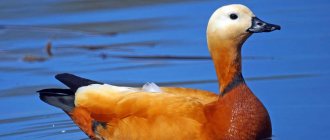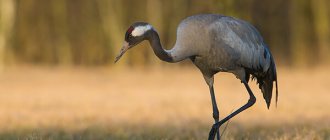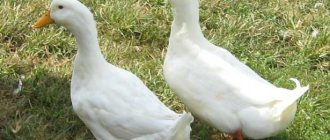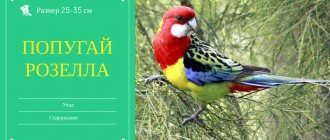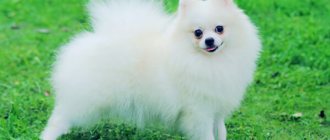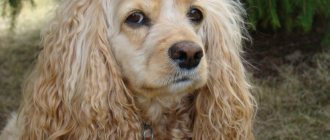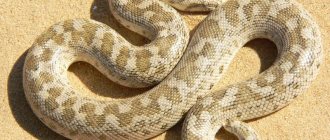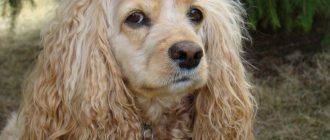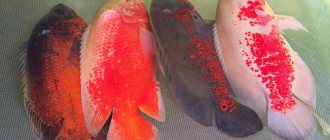Home » Articles about guinea fowl » Breeds of guinea fowl
Wild guinea fowl are inferior in productivity to artificially bred meat and egg breeds. Despite the limited number of the latter, you can choose the best option taking into account the desired characteristics.
Origin story
African chicken, as the guinea fowl is also called, came to Europe from the dark continent. In Swahili, the name of this bird sounds like kanga, and in the southern part of the mainland it is better known as genefal (literally - Guinea bird).
Guinea fowl was domesticated in ancient times. You can find images of her on ancient frescoes. With the decline of the Roman Empire, this type of poultry was practically exterminated in Europe. It was reintroduced by the Portuguese.
At the time when brave travelers were looking for a sea route to India, they encountered many exotic birds and animals.
In the Middle Ages, due to its unique color, the royal bird was kept mainly by wealthy patricians or royal nobles.
Image of guinea fowl on an ancient Greek mosaic
Pharaoh's chicken was a worthy decoration of their nurseries and reserves. Guinea fowl meat was revered as game. It was served at lunch and dinner parties.
Characteristic
Guinea fowl lead a terrestrial lifestyle. They live in flocks (up to 50 individuals), and during the mating season they split into pairs.
The stocky bird with strong legs is very timid.
Frightened, she can easily run 20 km, and when darkness falls, she flies up a tree and spends the night on the branches.
There are four varieties of wild guinea fowl:
- Turkey
- Curly
- Crested
- Vulture
The largest species is the vulture guinea fowl; photos show it in all its glory.
Its weight reaches 6 kg and, thanks to its long, elongated neck, it resembles a vulture.
Guinea fowl always loves to be in the company of its own kind.
Appearance
What it looks like, photo:
The common guinea fowl can be recognized by the following characteristics:
- about the size of a chicken;
- the body is oval, the body is dense;
- the plumage is thick, blue, cream, gray or light brown: gray and blue feathers have white spots, and cream feathers have shiny spots;
- pink beak;
- paws are gray, sometimes they can be pink;
- the tail is small, directed downwards;
- the neck is long, at the top, near the head, there are no feathers on it, in this place there is rough skin of a light blue color;
- on the head there is a growth similar to a horn and exactly the same is located on the chin, which makes the bird look like a turkey;
- the female and the male have the same color and differ only in the size of the head - the female’s is much smaller, in addition, she holds it straight;
- The chicks have brown down all over their body, except for the belly (where it is light), they have red legs and beak.
By nature, guinea fowl are very shy; they react loudly to the approach of a person to whom they are not yet accustomed. They are very friendly and sociable among themselves, often talking to each other.
The birds are also very hardy - they tolerate both cold and heat well.
Characteristics:
- adult weight – from 1.7 to 3 kg;
- the bird grows to 53-58 cm in length;
Thanks to their adaptive capabilities, the life expectancy of guinea fowl is more than 10 years.
What a guinea fowl looks like, description, where it comes from
Different breeds of guinea fowl differ in the color of their feathers and the decoration on the bird's head. General characteristics for all breeds:
- unusual plumage color, with characteristic white spots;
- oblong body;
- small drooping tail;
- on an elongated neck there is a small head, often without feathers;
- on the head there are earrings, a hard crest;
- some breeds have a feathery, curly crest;
- rounded short wings with large feathers.
The homeland of the guinea fowl is hot Africa. They still live in the wild. The bird came to Russia in the 18th century, and was bred as an ornamental pet in the royal courts. This is how the “royal” bird acquired its name. Acclimatization was successful; these chickens tolerate both the hot summer and the frosty winter of Russia.
Lifestyle
African chickens are accustomed to surviving in nature in a flock. The community is formed at the young stage and retains its identity for a long time. New birds are difficult for old-timers to accept, so guinea fowl of different ages should be kept separately.
With other inhabitants of the poultry yard, genephales behave like neighbors. They don’t sort things out themselves, but they don’t let themselves be offended either. It seems that a large body and relatively tall stature play an important role in this.
Owners of Pharaoh chickens often notice that the birds walk in circles around a person while feeding. In this case, the direction is always strictly clockwise. So far, experienced poultry farmers have not been able to decipher this feature.
The biggest problem during breeding, along with low egg production, is considered to be the great timidity of guinea fowls. They react strongly to the presence of a new person or animal.
If a stranger enters the house or unexpected noise occurs, the females sitting on the eggs may leave the clutch. For this reason, breeders usually do not risk chicks and use an incubator to replenish the flock.
On the other hand, the kang's timidity has its positive sides. The owners of remote farms do not have to worry about the safety of their property if they have guests from Africa living in their chicken coop.
They will make such a loud noise when a stranger approaches that they are sure to wake up everyone in the area.
Productivity
Guinea fowl reproductive function begins at the age of 7 months. When kept at home, the bird reaches sexual maturity exclusively in the winter months, due to which guinea fowl begin to lay eggs for the first time in the spring.
For the first 4 weeks they produce only small eggs, the shells of which are very hard. The colors of eggs differ in many ways from chicken eggs. Their colors range from light shades to red-brown tones with small inclusions.
A laying guinea fowl brings its owner approximately 120 eggs per year. And to increase egg production, the farmer must keep the bird in ideal conditions and provide it with adequate nutrition with an important complex of vitamins.
Thanks to such care, the annual number of eggs will be 200, or even 300 pieces.
It is important to note that eggs do not lose nutritional value throughout the year. You just need to store them in a room with a temperature of 4-6 degrees Celsius.
Meat productivity
The meat is high in protein (19-23%) and low in fat (4.9-7.3%). The ratio of essential amino acids in protein is especially favorable for humans.
The taste of guinea fowl meat is not inferior to that of upland game (hazel grouse, pheasant, partridge). It contains 5-7% more dry matter than chicken meat.
The slaughter yield is 82-85%. Guinea fowl carcasses contain on average 53% muscle tissue and 7.5-8.0% skin with subcutaneous fat. Despite the well-developed pectoral muscles, due to the blue color, the presentation of the carcasses is unattractive.
The skin of guinea fowl is quite thin, slightly pigmented, dark-colored muscles containing a significant amount of myoglobin are visible through it. When cooked, the carcasses immediately lighten, and the breast muscles become white.
Special purpose
Before you start breeding kangas, you should decide on their intended purpose.
African chicken, like any poultry, is kept for:
- offspring;
- eggs;
- meat;
- feathers
The first option is the most cost-effective. But even if you breed the royal bird for chickens or for the production of bedding, delicious dishes made from dietary genefal meat will still be present on your table.
First of all, the choice of the future breed depends on the economic purpose. It is no secret that meat-bearing guinea fowls lay eggs less often than egg-laying ones, and those, in turn, have a small mass and sparse plumage. There are no universal breeds.
Even the meat of different Pharaoh chickens can vary in color, toughness, taste and nutrients.
Depending on the breed, breeding conditions are selected. Some birds successfully endure harsh winters, but do not like the heat. Others may be sensitive to changes in humidity and stop laying eggs as a result.
Chicks of the third due to inappropriate conditions may slowly gain weight or be ill for a long time.
Zagorskaya white-breasted
Zagorsk guinea fowl can boast of a unique and very interesting color. Only the wings and back have a speckled gray color, and the bird itself is completely white, without a single spot. The Zagorsk white-breasted is similar in productivity to the Siberian white.
This is interesting! To breed the white-breasted breed, it took ten gray-speckled guinea fowl and four Moscow roosters. White-breasted guinea fowl turned out to be the color of roosters.
Popular breeds
Once you have decided on the purpose of your new pets, you should move on to reviewing the breeds and choosing the most appropriate ones for your purpose. Below in the table we have given a brief description of them and their features.
The list mentions the most common breeds and their effectiveness relative to their role on the farm.
Ordinary
In appearance, this species of the guinea fowl family resembles a voluminous barrel, and all because of the thickness and density of the feathers. Thanks to such a powerful cover, the bird does not freeze in winter, and even cools down in summer.
It may seem that the more feathers, the more difficult it is for the genafal to live. But in fact, their plumage promotes independent thermoregulation.
The height of the common guinea fowl is 40 cm, the body length reaches 60 cm. The bird's tail is small and always droops down. The neck is long, covered with fine down. The head is small and the beak has a majestic shape and size.
Volzhskaya white
The presented variety of genafal is distinguished by its pearl-colored plumage. Egg production with proper nutrition is approximately 110 eggs per year. The weight of one egg reaches 60 g.
Despite its undemanding conditions and climate, the Volga white guinea fowl requires proper care. They also require free range and a clean enclosure.
This species is less susceptible to various diseases than its winged counterparts, and all thanks to its strong immunity.
The eggs hatched by the Volga white breed are distinguished by a dense, dark-colored shell. This factor allows you to store bird “harvest” for quite a long time.
Zagorskaya white-breasted
This type of bird has a short body. The back has a convexity. The breast is flat, slightly enlarged. Females have a more fleshy chest than males. The beak is large in size, the tip is slightly curved.
The head is small, with growths visible on the sides that visually resemble earrings with white and red shades. The color of the feather part of the body depends on the color of the skin.
The tail is quite short, but the wings are large and powerful. A distinctive feature of the Zagorsk white-breasted guinea fowl is its snow-white breast. An important advantage of the breed is the thick shell of light-colored eggs.
It is very important for farmers that the presented breed of guinea fowl is unpretentious and easily tolerates temperature changes.
In the summer season, they can serve their owner in ridding the garden of small bugs and pests.
Chubataya
A distinctive feature of the presented variety is the majestic process in the form of a tuft. Thanks to this fact, the bird got its name. The forelock on the top of the head grows from black feathers that catch the eye.
The body length of forelock genafals ranges from 46-55 cm. The head is small, has a bluish tint, and there is no plumage. The dark body of this bird has pronounced white spots.
Chubby males, unlike females, are small in size. Their maximum weight is 1.5 kg. The farmer will be able to be content with the fertility of the forelock bird for 10 years.
Vulture
This variety of guinea fowl stands out clearly among the huge variety of birds in the farmstead. Only they have an unusual and enchanting plumage, thanks to which the majestic image of the winged creature is emphasized.
The head of the vulture guinea fowl is small, slightly reminiscent of a griffin. The bird's neck is quite thin and elongated, and there is no feathering on it.
The collar part is endowed with braids in dark tones. The height of the bird at the withers is 40 cm, the length of the body does not exceed 70 cm. The tail part is 24 cm. Adults have a large and long beak.
Unlike the common guinea fowl, the vulture variety has long and powerful legs, thanks to which they run quickly. In addition, this species can fly. The maximum flight altitude is 50 m.
Blue
The breed is quite rare; it is almost impossible to meet it on a private farmstead. Therefore, few people are familiar with their appearance and habits.
A distinctive feature of the blue representative of the guinea fowl family is increased productivity. The bird's feathers have lilac and blue tones. Against such a rich background, small specks are clearly visible, which make up even stripes.
The weight of adult males is 2 kg, females weigh a little more, namely 2.5 kg. The annual egg yield of laying hens is 150 eggs. The shell is hard, brown, with black dots. The weight of one egg is 45 g.
In fact, there are many more varieties of chickens from the guinea fowl family. These wild birds have managed to painlessly adapt to life in a private backyard, and without much difficulty perceive the proximity to other winged birds.
A unique feature of all guinea fowl is their easy adaptation to climate change.
Habitat
Wild guinea fowl - a native of Africa, a close relative of turkeys, chickens and quails, lives, like grouse and bustard , in forests, forest-steppe and steppe zones.
Some species live on the island of Madagascar.
Interesting! The scientific name of the guinea fowl is Numida meleagris, which is quite symbolic. The name is borrowed from the country from which the bird was brought - Numidia (modern Algeria and Tunisia). And the bird received its middle name thanks to the Greek hero Meleager, whose legendary exploits and courage were revered by ancient people.
The largest species is the vulture guinea fowl. Its weight reaches 6 kg and, thanks to its long, elongated neck, it resembles a vulture
Content
Guinea fowl do not require any special housing conditions.
An aviary, a walking yard and a poultry house for the winter are set up for them according to the following rules:
- Guinea fowl need a lot of freedom, so it is better for them to live in a large enclosure - 1 square. m for 2 birds;
- it is advisable to make a roof over it from a transparent material so that precipitation does not get inside;
- the fence is constructed from a mesh with small cells into which a bird’s head cannot fit;
- a 2 m high fence is installed around the enclosure and a walking yard is arranged;
- in the area for walking, it is best to plant bushes and build small houses, as well as install baths with ash and sand for cleaning feathers;
- in winter, birds live in poultry houses similar to chicken coops, and walk them on a warm bedding near the house;
- in the poultry house, perches are made at different heights, but not less than a meter from the floor;
- it is necessary to lay a 10-15 cm layer of straw, sawdust and hay on the floor so that the birds do not catch a cold;
- The poultry house needs to be cleaned once every 30 days;
- In winter, additional lighting is installed; it should be on until 10 pm;
- the aviary/winter poultry house and the walking yard are connected, if necessary, by a manhole;
- nests for laying eggs are arranged in a secluded place at the rate of 1 nest for 6-8 laying hens.
Often birds do not want to lay eggs in a designated area, so they need to be collected on the floor of the enclosure or around the walking yard.
Common guinea fowl are kept in flocks of 5-7 females and 1 male.
For adult birds, the feathers on one wing are trimmed by 10 cm twice a year to prevent attempts to fly away.
Guinea fowl are kept for 1-2 years. In the second year, only those who have demonstrated maternal instinct and high productivity are selected. There is no point in leaving them for the third, since egg production in laying hens is greatly reduced.
Wing clipping of guinea fowl
The ability to fly, which would be useful for guinea fowls in the wild, causes a lot of inconvenience to their owners. Therefore, it is customary for African chickens to have their wings clipped. They do this in two ways.
First way
Trimming in this way is carried out on small guinea fowl at the age of 1-5 days. In fact, this operation is called amputation, since it requires cutting off the first phalanx of the baby's wing with a hot knife or kitchen fish scissors.
Next, the wound is treated with one of the antiseptics available in the medicine cabinet: iodine, peroxide or brilliant green.
To prevent babies from pecking at the wound, it is recommended to carry out the procedure at night. It is enough to remove the phalanx on one of the wings. This operation allows you to leave beautiful plumage on an adult bird without the risk of loss of livestock.
Second way
The most common and is used to trim the wing of an adult bird or chickens that are getting on the wing. For birds, this operation is painless, but disfigures the appearance.
Before the procedure, one wing is completely unfolded. Only the first order flight feathers are trimmed. Leave stumps about 10 cm long. There is no need to treat the feather with anything. Similar actions are repeated up to 3 times a year as the wings grow.
Breeding guinea fowl at home
The royal bird comes from Africa and therefore loves warmth, light and prolonged exposure to the fresh air. Guinea fowls are actually not fussy about their care, but the genes of their wild relatives slightly dictate their own rules for keeping them. If you follow them, then there will be no problems with breeding and raising this bird.
How to form a parent herd
To breed guinea fowl, the strongest, healthiest and most accurate representatives of the breed are selected. The bird must be mobile, without signs of disease or damage. At 5 months the weight should be at least 1300 grams. They also pay attention to the strength of the beak and the moving, glossy eyes.
It is important to be able to distinguish a male from a female, since at first glance they may seem the same. Gender Difference:
- Along the ridge. In males it stands vertically, and in females it is inclined towards the tail.
- By growths - earrings. In boys they are larger.
- By wax. In the female it is small and does not stand out particularly above the beak. In males, on the contrary, it is clearly expressed.
- In a female guinea fowl at 5 months, 1 finger is placed between the bones of the womb.
In rather extreme cases, poultry farmers use the cloacal method of determining the sex of birds. To do this, lay her on her back and carefully open the cloaca. In males, a penis up to 1 cm long is visible there. This is definitely a very unpleasant procedure for guinea fowl, and they may experience stress.
For the parent herd, the calculation is that for 1 male there are 4–5 females.
Hatching instinct
The instinct of incubating eggs for breeding is good in wild guinea fowl, but unstable in domestic ones. If the female experiences the slightest fright, she can easily abandon the nest with eggs, and it is not a fact that she will return to them. Therefore, for the natural hatching of chicks, a decoy chicken or turkey is sometimes used.
Most often, females lay eggs in one common nest, and do not cover it with anything. The incubation period is 28 days.
Features of natural reproduction
African chickens begin laying eggs and hatching offspring from April to June, at the age of 7–8 months.
Natural reproduction consists of the following stages:
- Mating and fertilization during walking. This does not happen indoors.
- Laying eggs.
- To stimulate the hatching of eggs, the guinea fowl is not allowed to go for walks and is moved to a separate place from the rest.
- On average, there are 8–10 eggs in one clutch. Incubation duration is 25–28 days.
In the wild, the guinea pig cares for the female and future offspring. He brings food and protects from attacks.
Incubation method
Eggs that are no more than 5 days old are suitable for incubation. During collection, they are stored in a cool place up to +10°C, placed in a cardboard box with the sharp end down.
Requirements for choosing eggs:
- Same size and weight over 38g.
- Pear-shaped, no damage or unevenness of the shell.
- Eggs are collected only from guinea fowls that are already 1 year old.
- The fertilization of eggs is checked with an ovoscope.
Before being placed in the incubator, eggs must reach room temperature, then they are disinfected with a weak solution of potassium permanganate or using quartz treatment.
Requirements for conditions in the incubator for hatching guinea fowl chicks:
| Amount of days | Humidity, % | Temperature, °C |
| 0–6 | 60–70 | 38 |
| 7–12 | 35–46 | 37.5–37.7 |
| 13–22 | 70–80 | 37.3–37.5 |
| 23–28 | 65–75 | 37.5 |
Until day 24 of incubation, eggs must be turned 6 times a day. This is necessary so that the fruit does not stick to the shell. At the same time, the eggs are checked again with an ovoscope and specimens without an embryo or with dead embryos are discarded.
Conditions for breeding guinea fowl
In the wild, guinea fowl begin laying eggs when the dry season arrives. Therefore, dampness and high humidity are dangerous for young animals at the genetic level. They adapt to negative weather conditions as adults.
The male protects the eggs until the female sits down to hatch them, then he leaves and can mate with other guinea fowl. After the birth of the offspring, the Caesar, along with the mother, cares for the chicks.
Feeding
The main diet of guinea fowl includes:
- Cereals. Can be replaced with boiled potatoes and porridge.
- Vegetables. During the harvest season, you can give zucchini, watermelons, and melons.
- Compound feed. Based on 130-150 grams per day per 1 bird.
- Greenery. 50 grams per day for 1 individual.
Basic rules and features of feeding:
- Guinea fowl are fed 4 times a day.
- Crushed shell or chalk should be added to food to provide calcium.
- In winter, the diet should include fish oil, milk and meat scraps to maintain good health. They also make mash with warm broth from grass, porridge or potatoes.
- In addition to clean water, it is useful to give birds a weak solution of potassium permanganate.
- Birds love to eat insects, especially Colorado potato beetles, but they do not spoil the beds and behave neatly. This is another advantage of keeping it, especially for those who have their own garden.
Basic rules for feeding young animals:
- At first, the chicks may not find food and water, so food is served on a wooden plank and lightly tapped on it to attract attention, and water is poured into a saucer. To make the birds drink, you can gently dip their beaks into the water.
- Newborn chicks are fed every 2 hours with crushed hard-boiled eggs mixed with porridge, millet and cottage cheese.
- From day 3, chicken feed and greens are added.
- From a week of age, feeding occurs every 3 hours.
- From the second week, salt, fish oil and yeast are introduced into the diet.
- On the third - boiled potatoes and other vegetables.
- From the age of one month, chicks are usually transferred to four meals a day.
- From 3 months they begin to eat like adults.
Poultry diseases
Insufficiently good living conditions, untimely hygiene and poor quality nutrition can be the main reasons for the development of diseases.
The table provides data on the symptoms of the most common diseases in guinea fowl:
| Disease | Symptoms |
| Pullorosis | yellowish or white droppings; |
| loss of coordination; | |
| immobility. | |
| Dyspepsia | lack of appetite; |
| diarrhea with foam; | |
| decreased activity. | |
| Salmonella | lack of appetite; |
| inactivity; | |
| green droppings mixed with blood. | |
| Gout | deformation and hardening of joints |
| Trichomoniasis | yellow diarrhea; |
| thirst; | |
| lack of appetite; | |
| inflammation of the goiter and larynx. | |
| Helminthiasis | weight loss; |
| lack of appetite; | |
| disruption of the gastrointestinal tract. |
For the most part, the Caesar is still a bird with good and stable immunity. If you feel unwell, it is best to seek the help of a veterinarian.
Herd vaccination
Guinea fowl have the highest resistance to all infectious diseases compared to any poultry. They get sick extremely rarely, so young animals are not vaccinated. Timely prevention is sufficient.
Disease Prevention
For the quality of life and health of the entire poultry population, it is important to follow some preventive measures.
The most important of them:
- hygiene of premises and walking areas;
- eliminating drafts and high humidity;
- high-quality and fresh food;
- daily cleaning of feeders and drinkers;
- adding vitamin and mineral supplements to the diet.
Guinea fowl are strong birds; they tolerate low air temperatures easier than all poultry. But this only applies to adults.
Maintenance in winter
In winter, guinea fowl should insulate the room and ensure that it is warm and the air temperature does not fall below 18 degrees. It is necessary to clean the room once a month, be sure to replace the old litter with fresh litter as it gets dirty.
Also, birds of this breed need long-term and good illumination, so in winter the lights are not turned off for 12 hours a day.
During this period, guinea fowl are also allowed to be taken for a walk, if the air temperature does not drop below -10 degrees, walking is carried out for a limited time, or the poultry farmer will have to monitor the behavior of the birds.
If they start to huddle together, this indicates that they are cold. Then they are immediately driven into the room.
In winter, the diet of guinea fowls should be complete. Birds are fed 2 times a day.
In the morning, it is allowed to give a mash based on meat waste with sour milk and special means to increase egg production. In the evening, the poultry should be provided with grain and feed.
In the room, be sure to install containers with shells, chalk, and fine gravel. They will also equip a box filled with ash and sand in equal proportions - the guinea fowl will bathe in this mixture.
Nutrition
What to feed guinea fowl at home? When walking, the bird has the opportunity to independently provide itself with its daily food ration. If it is impossible to find food, the bird must be fed three times a day.
The guinea fowl is considered an unpretentious bird, so its diet at home can consist of different foods. Permitted food products for guinea fowl include various feeds, herbs, corn, etc.
Their diet can be varied with beetles and worms, as they love them very much. Therefore, it is better to let them out for a walk in the garden to kill harmful insects. You don’t have to worry about loosening the soil, since guinea fowl do not have such a habit.
In addition to food, the bird must receive a sufficient amount of water. To ensure the purity of the liquid, the water in the container should be changed every 7 hours.
